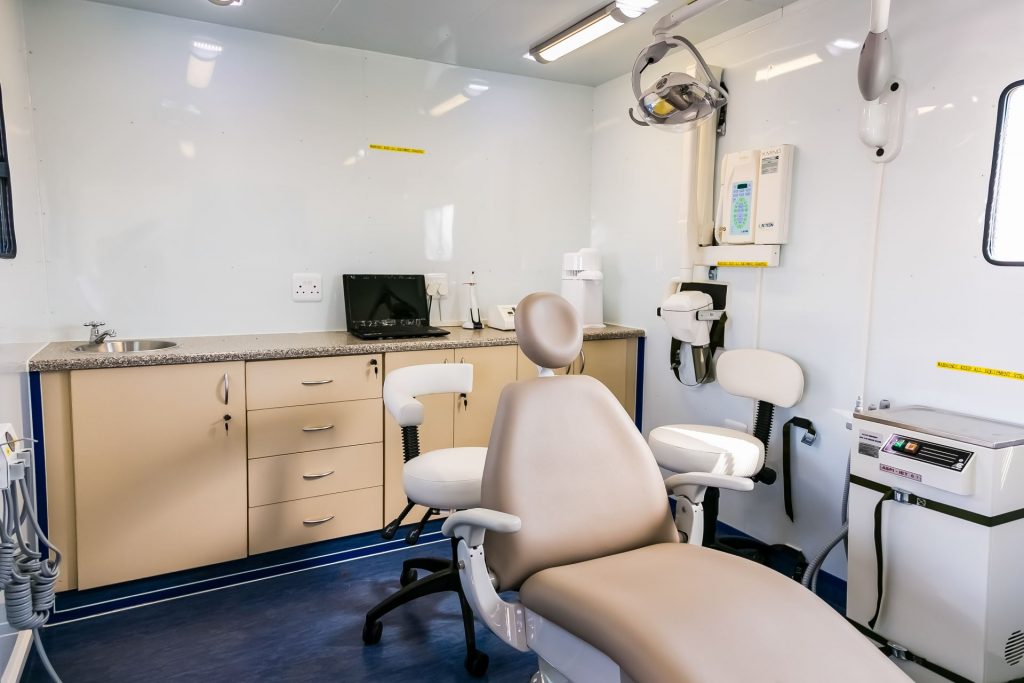Written by Sowmya Kolluru and Edited by Josephine Chan

Mobile clinics are growing in value, as they overcome various barriers to healthcare accessibility and facilitate the provision of medical care and resources. According to a 2020 analysis of a decade’s worth of data from 811 medical mobile clinics, a median of 3491 medical consultations were made by these clinics annually. Women, individuals from minority groups, or uninsured individuals commonly sought care for many different reasons from these medical mobile clinics. These clinics, in increasing accessibility to medical care, are vital to our healthcare system [1].
Access can be a limiting factor in individuals’ pursuit of quality medical care, so medical mobile clinics target this issue by bringing healthcare resources into the communities they serve. These mobile clinics, often housed in vans or other mobile units, carry the necessary equipment and staff to provide medical consults to individuals. Each mobile clinic can be equipped with different resources based on the services that they provide [2]. Moreover, these mobile clinics provide an array of services to individuals in the communities they serve. Some specialize in a certain field of medical care, such as imaging, while others provide a more diverse selection of services. According to a 2014 study published in The American Journal of Managed Care, mobile clinics establish trust with individuals in the communities they service. Their affordable resources and services, convenience, and focus on prevention of disease help to overcome access challenges and improve healthcare outcomes [3].
In the United States, a database of mobile clinics has been compiled to help evaluate the efficacy of these clinics on improving healthcare outcomes. Individual clinics can add their data into the database and view the impact of other clinics as well. Importantly, the Mobile Health Map service generates a report detailing their impact on healthcare. According to this report, mobile clinics target isolated groups around the world, including individuals lacking health insurance. Most often, primary and preventative care services are offered to patients in a cost-effective manner. Included in this report is data generated by the Breathmobile Asthma Mobile Clinics in Orange County, which noted a major decline in hospitalizations and ED visits, among other factors [4].
Given the growing prevalence of mobile clinics, as evidenced by the Mobile Health Map service, it is important to assess the benefits of and challenges faced by mobile clinics. One major benefit of medical mobile clinics is the convenience of receiving medical care in the comfort of their own community. This benefit is furthered by the high quality care individuals receive from these mobile clinics, as these clinics are held to the same standard as hospitals and other healthcare entities. Finally, mobile clinics are cost-effective, because they travel between many communities to provide care. This allows the financial responsibility of operating the clinic to be effectively balanced between the multiple communities receiving care. [5]. Mobile clinics still face challenges, and increasing funding for and legislative action on mobile clinics will help them continue improving healthcare outcomes [6].
Medical mobile clinics offer a unique solution to bridging the healthcare divide, improving access to quality healthcare resources. While not necessarily a new concept, these clinics are gaining traction and have been successful in providing medical care to individuals in their community. With increased support, these clinics will continue being integral parts of the healthcare system.
References:
- Malone, N.C., Williams, M.M., Fawzi, M.C.S., Bennet, J., Hill, C., Katz, J.N., Oriol, N.E. (2020). Mobile health clinics in the United States. International Journal for Equity in Health, 19:40.
- “Mobile Clinics: How They Fit Into The Future Of Healthcare.” Vera Whole Health. https://www.verawholehealth.com/blog/mobile-clinics-how-they-fit-into-the-future-of-healthcare. Accessed 20 April. 2021.
- Hill, C.F., Powers, B.W., Jain, S.H., Bennet, J., Vavasis, A., Oriol, N.E. (2014). Mobile Health Clinics in the Era of Reform. The American Journal of Managed Care, 20:261-264.
- “What is Mobile Health Map?” Mobile Health Map. https://www.mobilehealthmap.org/what-is-mobile-health-map. Accessed 10 April, 2021.
- “Six Benefits Offered by Mobile Healthcare Clinics.” Innovo Mobile Healthcare. https://www.innovomobilehealth.co.za/news-old/six-benefits-offered-by-mobile-healthcare-clinics/. Accessed 10 April. 2021.
- Attipoe-Dorcoo, S., Delgado, R., Gupta, A., Bennet, J. Oriol, N.E., Jain, S.H. (2020). Mobile health clinic model in the COVID-19 pandemic: lessons learned and opportunities for policy changes and innovation. International Journal for Equity in Health. 19:73.
